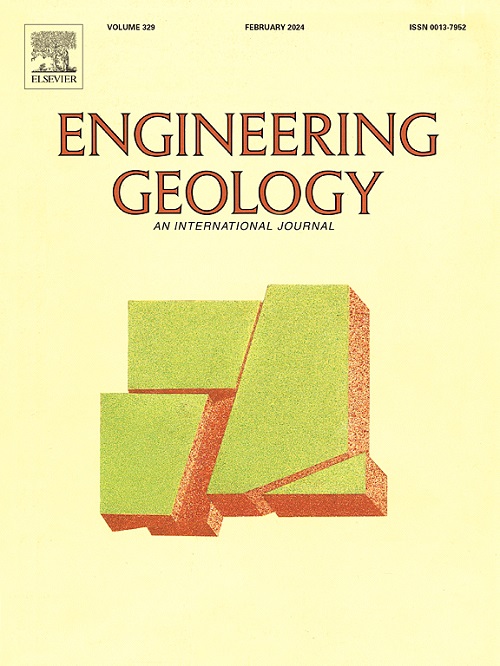Enhancing long-term prediction of non-homogeneous landslides incorporating spatiotemporal graph convolutional networks and InSAR
IF 6.9
1区 工程技术
Q1 ENGINEERING, GEOLOGICAL
引用次数: 0
Abstract
Accurately predicting landslides is critical for effective warning and management, but remains challenging due to unpredictable triggering events and the spatial heterogeneity of soil and slope structures. Existing prediction methods often rely on point-sampled data, neglecting the heterogeneity in landslide evolution. To address this, we propose integrating Spatiotemporal Graph Convolutional Networks (STGCN) with Synthetic Aperture Radar Interferometry (InSAR) to capture the spatiotemporal characteristics of landslide events. The STGCN processes spatial features through its Graph Neural Network (GNN) layer and analyzes temporal dynamics using the Gated Recurrent Unit (GRU) layer. This allows for a more precise extraction of displacement features associated with landslides. An application of this approach in the Sela Mountain region of the Jinsha River on the Tibetan Plateau (China) demonstrated that the STGCN model significantly improves prediction accuracy compared to traditional deep learning models, with Mean Squared Error (MSE) and Mean Absolute Error (MAE) reduced to 25.51 and 2.34, respectively. This represents a 35 % and 50 % improvement over the best-performing traditional model in similar tests. Notably, this method, notably the first to incorporate the direction of material migration in landslide predictions, effectively addresses the challenge of spatial heterogeneity and expands the predictive framework from merely temporal to both spatial and temporal dimensions. Our findings highlight that this integrated approach provides a powerful tool for more accurate and comprehensive landslide prediction.求助全文
约1分钟内获得全文
求助全文
来源期刊

Engineering Geology
地学-地球科学综合
CiteScore
13.70
自引率
12.20%
发文量
327
审稿时长
5.6 months
期刊介绍:
Engineering Geology, an international interdisciplinary journal, serves as a bridge between earth sciences and engineering, focusing on geological and geotechnical engineering. It welcomes studies with relevance to engineering, environmental concerns, and safety, catering to engineering geologists with backgrounds in geology or civil/mining engineering. Topics include applied geomorphology, structural geology, geophysics, geochemistry, environmental geology, hydrogeology, land use planning, natural hazards, remote sensing, soil and rock mechanics, and applied geotechnical engineering. The journal provides a platform for research at the intersection of geology and engineering disciplines.
 求助内容:
求助内容: 应助结果提醒方式:
应助结果提醒方式:


